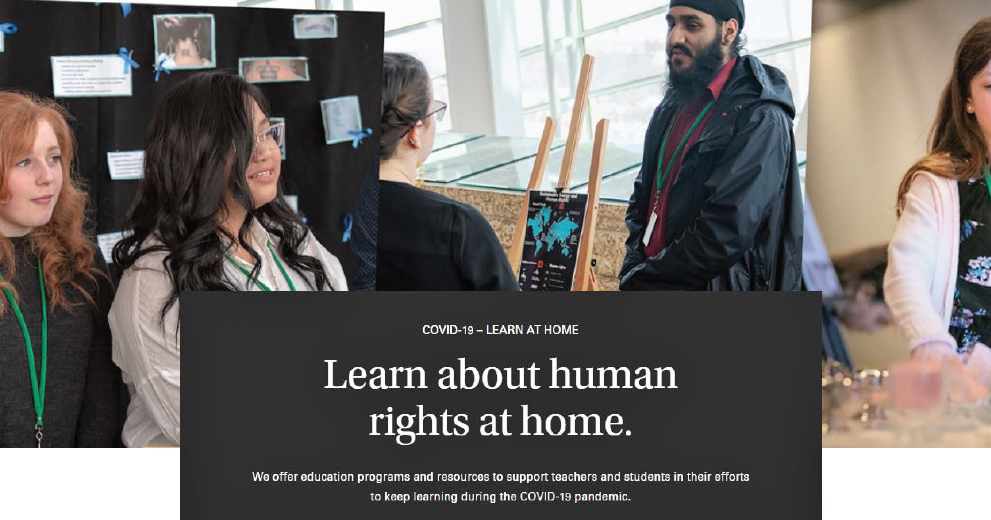
Teaching human rights to your students at home? You’ll love the vastly expanded resources available on a new section of the Canadian Museum for Human Rights (CMHR) website.
Launched this week, “COVID-19 – Learn at home” pulls together three virtual tours for students along with an augmented reality experience on the Canadian Charter of Rights and Freedoms, inspiring video profiles of human rights defenders, and fresh content on its mobile app.
“Teachers are looking for innovative ways to connect students with interesting educational materials,” said CMHR Education Program Manager Lise Pinkos. “Our programs are credible resources, developed with advice from teachers, that align with provincial curricula in Canada.”
Pinkos says the new programs can help students meet outcomes for English Language Arts, French or Social Studies and even be used for subjects like art and music.
She says many teachers have been using the Museum’s recorded virtual tours as learning experiences for remote classrooms. The Museum is now working on lesson plans for these tours, all tailored to a home-learning environment, and all available in English or French.
If you have students who have challenges accessing online programs, Pinkos says the Museum’s education team can help. You can find more information on the Museum’s website at humanrights.ca, under the “Education” tab.
New program content
Virtual lesson with a Museum program interpreter
High-school students can learn about the Canadian Charter of Rights and Freedoms and the Supreme Court of Canada in this real-time virtual lesson, adapted from a Museum school program.
Learning with augmented reality (AR)
Students can download “Proclamation 1982” for free from the App Store to learn about Canada’s Charter of Rights and Freedoms. The app (for iOS only) makes virtual people and objects appear in front of them, along with video, audio and historic images.
Be an Upstander
After watching a video filmed in the Museum’s Rights Today gallery, students work through an interactive website and learn that they also possess traits of a human rights upstander. They’ll be challenged to take tangible steps to create change through a special project.
Virtual tours
The Museum has three different virtual tours teachers can use with at-home classrooms of all ages. “A Canadian Journey” is a 20-minute tour through the Indigenous Perspectives and Canadian Journeys gallery. In “A View from the Top” students learn about grandmothers in South Africa raising awareness about AIDS orphans. In “Amazing Architecture” students look at outdoor and indoor elements of the Museum building, learning how the architect was inspired by the Canadian landscape and human rights.
Elsewhere on the site
Indigenous art and youth visions
Students can explore the Spirit Panels that adorn a circular “basket” theatre in the Indigenous Perspectives gallery.
Learning about Indian residential schools
The Museum has posted a link to a powerful 90-minute documentary called Picking Up the Pieces: The Making of the Witness Blanket.
Mobile app
The Museum’s mobile app, offers a virtual gallery tour where students can learn about exhibits and architecture through narration, images and video – right on their phones or tablets.
